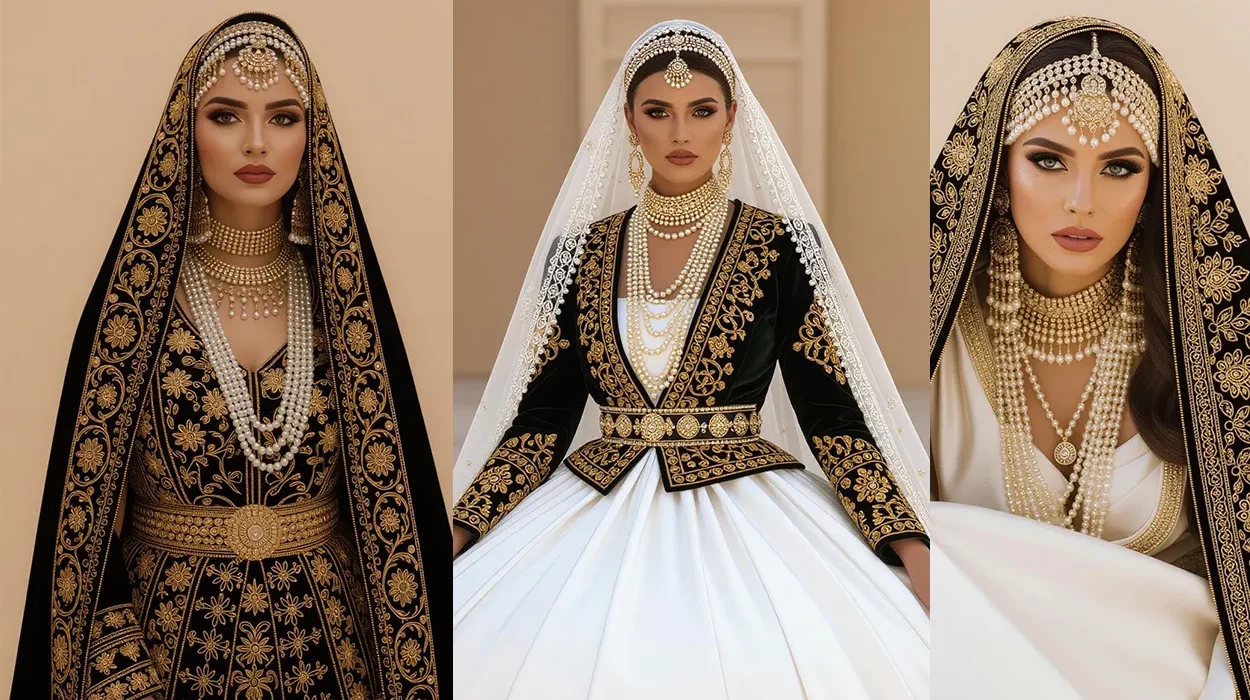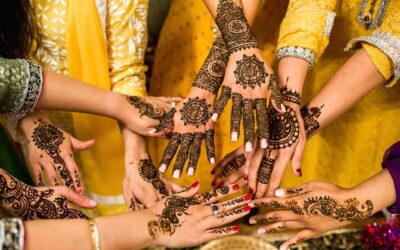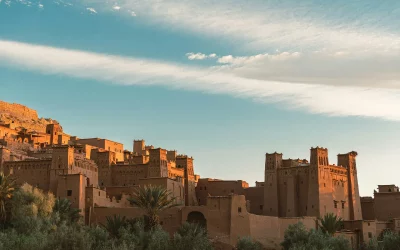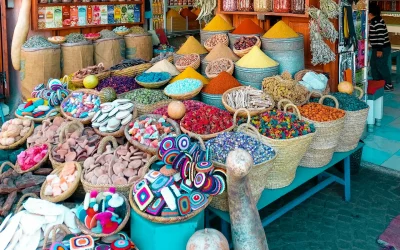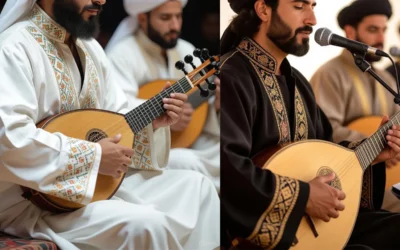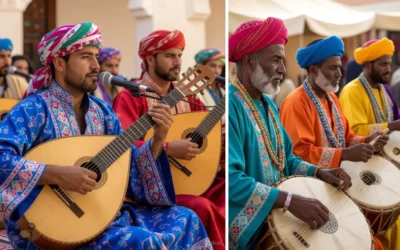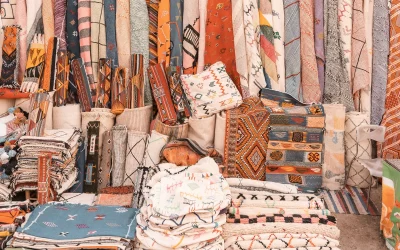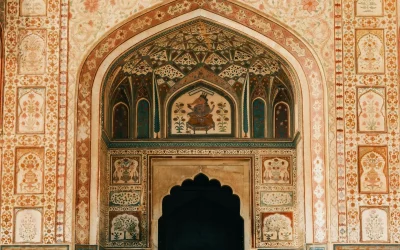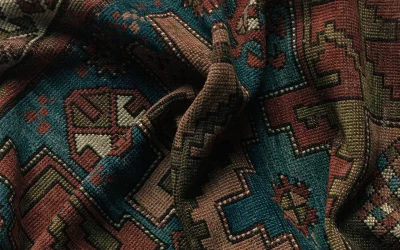A symbol of elegance and tradition, the ‘Keswa el Kebira’ – literally ‘the big dress’ – embodies the essence of Moroccan Jewish weddings. Inherited from medieval Andalusia, this wedding dress has become a ceremonial garment of inestimable value, both for its beauty and for its rich symbolism. Woven with gold thread and imbued with deep spiritual meaning, it is passed down as a true vessel of memory and culture. Even today, the Keswa el Kebira remains one of the pillars of wedding celebrations, particularly during the henna night.
The Andalusian heritage: a tradition firmly rooted in Morocco
The roots of the Keswa el Kebira date back to 15th-century Spain. At that time, in the heart of the lavish courts of Muslim kings, Jewish artisans created sumptuous dresses embroidered with gold thread. The expulsion of the Jews from Spain in 1492 led to the dispersal of this craft, which found refuge in Morocco, particularly in Fez, a city renowned for its master embroiderers.
The Keswa el Kebira – also known as the ‘traje de berberisca’ in Judeo-Spanish – became an essential piece of traditional clothing, worn at weddings to affirm the bride’s social status and cultural identity. Often given as a dowry, it was passed down from generation to generation as a true family treasure, embodying both Jewish-Moroccan identity and memory.
The opulence and deep meanings of the Keswa el Kebira
The Keswa el Kebira is distinguished by its sumptuousness and refinement. It consists of several richly decorated pieces, each with symbolic value. At the centre of the outfit is the ‘ghonbaj’ (or “gombaz”), a fitted velvet corset embroidered with gold thread and embellished with sequins, worn over a matching breastplate (‘ktef’). The sleeves (‘kmam’), light and airy, made of muslin or silk, are attached under the shoulders, lending fluidity and elegance to the ensemble.
The skirt, called a ‘zeltita’ (or ‘jeltita’), is another key piece. Made of velvet, it wraps around the waist and is adorned with gold braid arranged in horizontal bands. The number of bands varies according to tradition, but often reaches 22 – a reference to the 22 letters of the Hebrew alphabet and the Torah. In some versions, there may even be 26, corresponding to the numerical value of the divine name according to gematria.
To complete the ensemble, a wide belt (‘hzam’), often made of golden silk brocade, is wrapped several times around the hips to hold the skirt in place. On her feet, the bride wears finely embroidered slippers, while her head is adorned with a sumptuous headdress (‘sfifa’ or ‘swalef’) decorated with pearls, gold coins and precious stones. Each of these elements has a special meaning, as do the embroidered motifs: vine branches and bunches of grapes symbolising abundance and prosperity, spirals and wheels evoking the cycle of life and eternity.
The colours of the velvet vary according to region: emerald green or midnight blue in the cities of central Morocco, garnet red or purple in the north, particularly in Tetouan and Tangier.
A garment at the heart of wedding rituals
The Keswa el Kebira is not just a dress: it occupies a central place in the Jewish-Moroccan wedding ritual. Although it is not worn under the ‘chuppah’ – the religious wedding altar – it is an essential part of the pre-wedding festivities, particularly during the henna night (‘noche de Berberisca’ in the north of the country).
This festive occasion, punctuated by Judeo-Spanish songs and a joyful atmosphere, sees the bride, draped in gold and tradition, receive blessings from her loved ones. Her entrance, resplendent in beauty, seals the alliance between two families and perpetuates the continuity of customs. Often, mothers and grandmothers also wear their own Keswa el Kebira, creating a tangible link between generations.
In the past, the same dress could be worn for decades, worn by several women in the same family during major events – weddings, circumcisions, bar mitzvahs or religious festivals – thus reinforcing its symbolic value.
Transmission of a living heritage
Although the use of the Keswa el Kebira has become less common over time, it remains a vibrant symbol of Jewish-Moroccan identity. The production of these dresses declined sharply from the 1950s and 1960s onwards, as a result of the mass exodus of Jews from Morocco and the rise in popularity of Western wedding dresses. Nevertheless, some brides from Moroccan families continue to wear it, particularly during the henna ceremony.
Ancestral skills – gold embroidery, velvet weaving – have gradually declined with industrialisation and globalisation. Authentic Keswa el Kebira dresses are now considered collector’s items and family treasures, often kept by descendants living in Israel, France or Canada.
Every time a bride from the diaspora wraps herself in this sumptuous dress, she revives the history and collective memory of the Judeo-Moroccan community. More than just a garment, the Keswa el Kebira embodies the soul of a bicultural heritage, weaving together Hispano-Moorish heritage and Jewish tradition to continue to shine through the generations.

